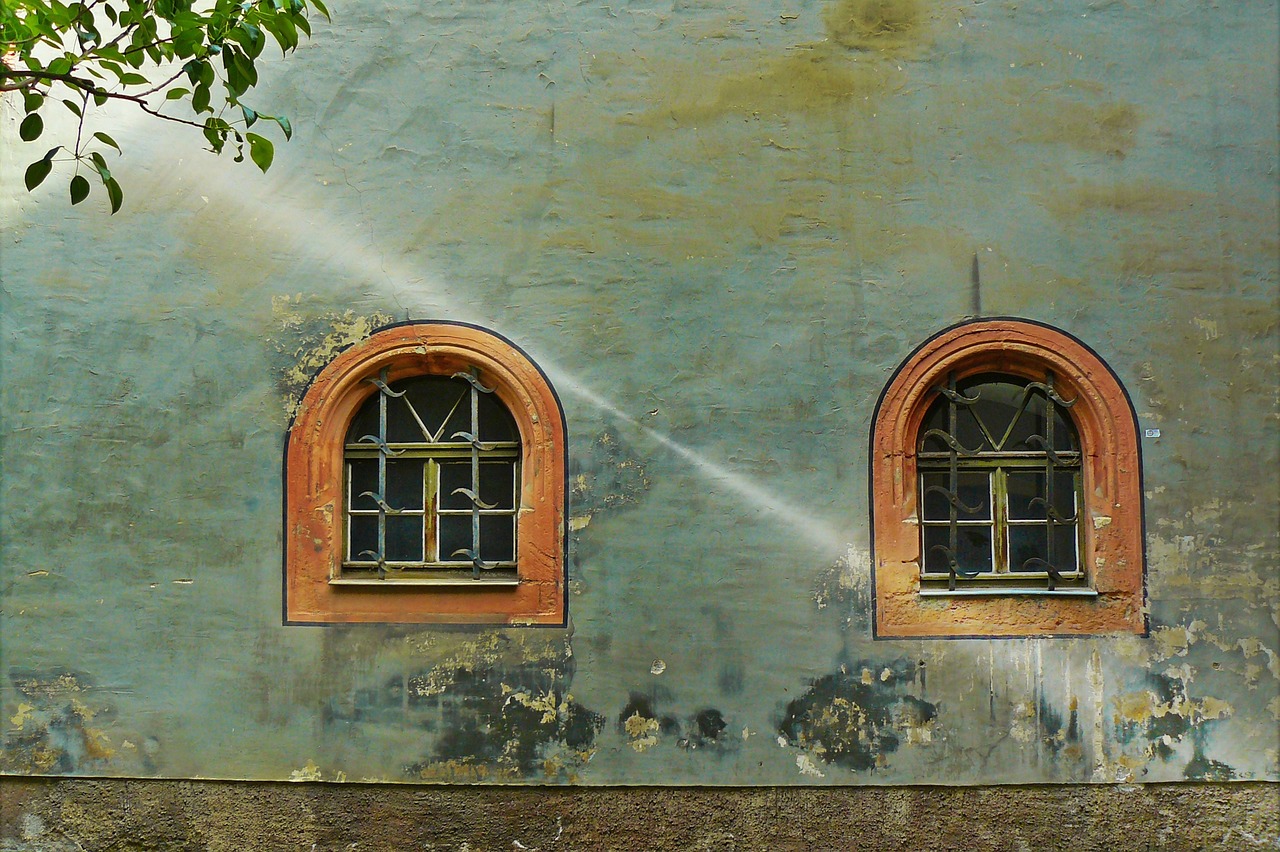Nestled amidst the rugged terrain of Bulgaria, a majestic sight awaits those who seek to uncover the mysteries of the past. Shumen Fortress, a captivating historical landmark, stands as a testament to the resilience and ingenuity of ancient civilizations. As the sun casts its golden rays upon the weathered stones, the fortress emerges from the depths of time, inviting visitors to embark on a journey through the annals of history.
With origins dating back to the Thracian era, Shumen Fortress has witnessed the rise and fall of empires, its walls echoing the footsteps of Roman legions, Byzantine warriors, and Bulgarian conquerors. This formidable stronghold played a pivotal role in the First Bulgarian Empire and flourished as an epicenter of trade and culture during the Second Bulgarian Empire.
Today, the remnants of this once-mighty fortress stand proudly, their weathered facades offering invaluable insights into the lives and military customs of medieval Bulgarians. As an open-air museum, Shumen Fortress beckons curious souls to explore its winding alleys and decipher its enigmatic past. A reconstructed tower offers a breathtaking panorama of the town and the surrounding nature park, captivating the senses and providing a glimpse into the beauty and serenity that coexist with history.
Visitors to Shumen Fortress can delve into the depths of time with the aid of knowledgeable guides, who generously share their expertise and passion. Information materials available at a nearby kiosk further enrich the experience, allowing visitors to delve deeper into the rich tapestry of this remarkable landmark.
Beyond the walls of Shumen Fortress, a trove of wonders awaits. The nearby Veliki Preslav National Historical-Archaeological Reserve and Madara National Historical-Archaeological Reserve offer further glimpses into Bulgaria’s storied past, ensuring that every freedom-seeking traveler is immersed in a world of captivating history.
Embark on a journey through time, as Shumen Fortress unveils its rich history, inviting you to bear witness to the enduring legacy of a bygone era.
Key Takeaways
- Shumen Fortress is one of the most famous landmarks in Bulgaria and the Shumen region.
- The fortress was built by Thracians and later completed and reconstructed by Romans, Byzantines, and Bulgarians.
- The fortress played a crucial role during the First Bulgarian Empire and continued its existence during the Ottoman rule.
- The remains of the fortress provide important information about the way of life and military customs of Bulgarians during the Middle Ages.
What is it?
Shumen Fortress, located 3 kilometers away from the center of modern-day Shumen, is a historical-archaeological preserve that dates back approximately 3200 years and has been influenced by various civilizations such as the Thracians, Romans, Byzantines, and Bulgarians. This fortress holds immense historical significance as it played a crucial role during the First Bulgarian Empire, due to its proximity to the old Bulgarian capitals Pliska and Preslav. It later became an important economic and cultural center during the Second Bulgarian Empire. The remnants of the fortress provide valuable insights into the way of life and military customs of Bulgarians during the Middle Ages. As a cultural heritage site, Shumen Fortress showcases the architectural achievements and military strategies of multiple civilizations that have shaped the region’s history.
Ancient Origins and Construction
The origins and construction of the fortress have been thoroughly examined, shedding light on its ancient beginnings and the various civilizations that contributed to its development. The fortress is believed to have been initially built by the Thracians, with evidence suggesting its existence approximately 3200 years ago. Throughout its history, the fortress underwent numerous reconstructions and expansions by Romans, Byzantines, and Bulgarians. These different civilizations left their mark on the architectural features of the fortress, resulting in a unique blend of styles. The Thracian influences can be seen in the original layout and design, while the Romans and Byzantines added their own architectural elements. The Bulgarians further expanded and fortified the structure during the First Bulgarian Empire. The study of the fortress has provided valuable insights into the military customs and way of life of the Bulgarians during the Middle Ages.
Strategic Importance
Due to its strategic location near the old Bulgarian capitals and its role during various historical periods, the fortress has been recognized as a significant military stronghold in the region. Its history and significance can be understood through the following points:
- The fortress played a crucial role during the First Bulgarian Empire, due to its proximity to the old Bulgarian capitals of Pliska and Preslav. It provided protection and served as a defense point against invaders.
- During the Second Bulgarian Empire, the town of Shumen became an important economic and cultural center, and the fortress played a vital role in safeguarding the region.
- The complex compound of buildings and military equipment within the fortress demonstrates the strategic planning and military prowess of the Bulgarians during the Middle Ages.
- The remains of the fortress have been extensively studied, providing valuable insights into the way of life and military customs of Bulgarians during that time.
- The fortress’s strategic location and historical significance make it a must-visit landmark for those interested in Bulgarian history and military architecture.
Archaeological Discoveries
Archaeological excavations at the fortress have yielded significant discoveries that shed light on the historical and cultural aspects of the region. These findings have revealed the cultural significance of the Shumen Fortress throughout its various periods of occupation. The remains of 12 churches, an ancient Roman bath, pottery, vessels, adornments, and coins have been unearthed, providing valuable insights into the way of life and military customs of Bulgarians during the Middle Ages. These artifacts not only demonstrate the architectural and artistic achievements of the fortress, but also provide evidence of the economic and cultural importance of the town of Shumen during the Second Bulgarian Empire. The excavation findings have been meticulously studied, providing a wealth of information about the history and development of the fortress, as well as its role in the broader context of Bulgarian history.
Visit and Accessibility
Access to the Shumen Fortress is convenient and straightforward, with clearly marked alleys and signs guiding visitors to the site. Once at the fortress, visitors have the option of taking guided tours, which provide in-depth information about the historical and archaeological significance of the site. The guides are knowledgeable and offer their services in Bulgarian, Russian, and English, ensuring that visitors from different backgrounds can fully appreciate the experience. Additionally, the fortress is equipped with information materials such as books and brochures, which can be purchased from a small kiosk next to the site.
In terms of accessibility, the fortress is easily reachable by following the signs from Tombul Mosque. There is a well-maintained asphalt road leading to the site, making it suitable for all types of vehicles. Furthermore, the fortress is open for tourists all year round, allowing visitors to plan their visit at their convenience.
For those interested in exploring more of the region, there are several nearby attractions worth visiting. The Veliki Preslav National Historical-Archaeological Reserve, the Madara national historical-archeological reserve, and the Pliska National Historical and Architectural Reserve are all within close proximity to the Shumen Fortress. Additionally, the Sherif Halil Pasha Mosque in Shumen is another notable landmark that can be explored in the area.
Frequently Asked Questions
What is the significance of the name "Shumen" and how did the fortress get its name?
The significance of the name ‘Shumen’ lies in its historical and cultural context. The origin of the fortress’s name is unclear, with no specific legends or folklore associated with it mentioned in the provided information.
Shumen Fortress is an architectural marvel with immense cultural significance. Its complex compound of buildings and military equipment reveals the rich history of Bulgarians during the Middle Ages.
Are there any legends or folklore associated with Shumen Fortress?
Legends and folklore associated with Shumen Fortress are not explicitly mentioned in the provided background information. Further research is needed to explore any famous tales, folklore, or myths surrounding the fortress.
The significance of the archaeological findings at Shumen Fortress lies in their ability to provide important information about the way of life and military customs of Bulgarians during the Middle Ages. The architectural features of the fortress include 12 churches, an ancient Roman bath, pottery, vessels, adornments, and coins.
Were there any major battles or conflicts that took place at Shumen Fortress?
Several major battles and conflicts took place at Shumen Fortress throughout its history. Historical figures, such as the crusaders led by Vladislav Varnenchik, played a role in the destruction and burning of the fortress in 1444.










